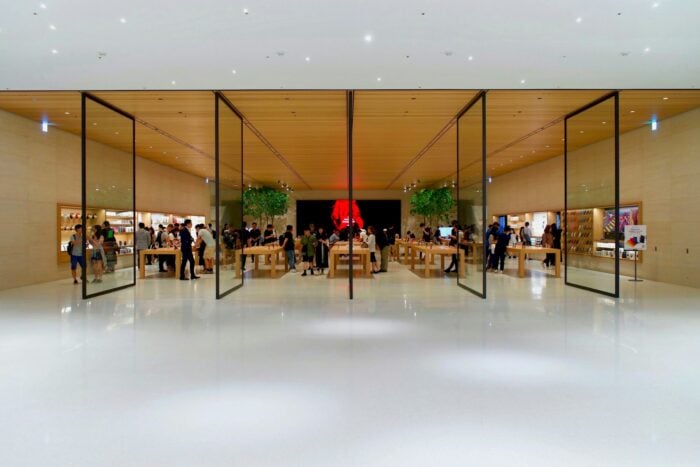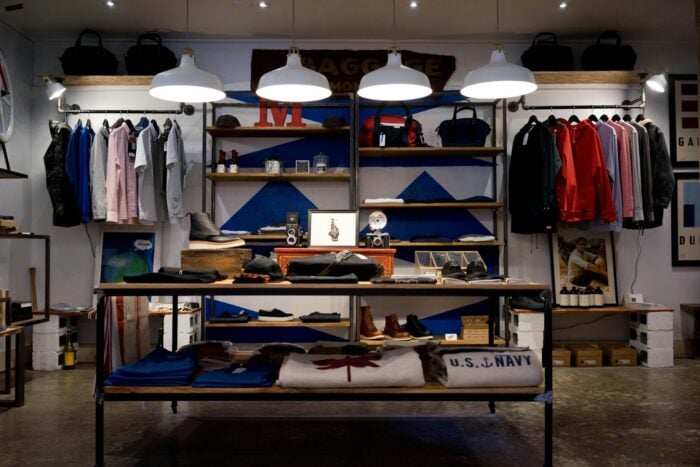What sensory design means for the future of retail
Retail has changed a lot over the years. Once upon a time, you could only purchase goods by visiting a store in person, now you can buy products online and even via social media platforms.
While it’s convenient for customers, retailers must think of new and innovative ways to market their products. And that’s where sensory design comes into play.
What is Sensory Design?
If you didn’t know already, most of our perception of the world is rooted in our five senses (taste, touch, see, hear, smell).
For example, have you ever noticed how food tastes better in candlelight? Or how it’s easier to relax in a space with lots of natural light and comfortable chairs? Even the simplest things can engage our senses and impact how we feel.
Never Miss a Retail Update!Sensory design is an approach to crafting memorable and stimulating experiences for shoppers that engage multiple senses. The purpose of sensory design is to create a meaningful experience that simulates an emotional response in the shopper.
By incorporating sensory design within a store, retailers can evoke specific emotional responses from shoppers and create deeper connections between their customers and their shop environment. This can lead to increased sales, better reviews, and improved customer loyalty – all good things for retailers hoping to stand out from the competition.
Why is Sensory Design Important in Retail?
Strengthens Brand Loyalty
When you utilise sensory innovation and design as part of your retail marketing strategy, you create a space that your customers enjoy spending time in.
Emotional Brand Connections
By creating emotional connections throughout the shopping experience, you establish a strong connection between your brand and your customers. This ultimately strengthens brand loyalty and sees customers returning time and again to buy your products.
Increases Time Spent In Store
As a retailer, you want your customers to spend more time in your store. This is because the longer they’re in your store, the higher your chances are of making a sale.
Sensory design creates an environment that is engaging and enjoyable to be in, thereby increasing time spent in-store and the potential for increased sales.
Connects with Customers
When you incorporate sensory design into your retail store, you do so after researching what your customers like and what they respond to. Effective sensory innovation is the result of in-depth user research. It is a way to respond to your customers’ wants and needs by giving them something they enjoy in return.
Examples of Sensory Design in Action
Shoppers are more likely to create positive associations with retailers when sensory design is prioritised as part of the retailer’s marketing strategy. Sensory design can improve brand recall, testimonials, and purchasing intent among shoppers. Here are two examples of sensory design being used by some of the most popular retailers.
IKEA

IKEA is well-known for creating engaging shopping experiences. From their one-way systems and immersive, scented displays to their delicious dining and find-it-yourself warehouse, IKEA has created a shopping experience that delights shoppers and encourages them to engage with and buy IKEA products.
Apple
The Apple brand is another great adopter of sensory design. They have prioritised great branding, with clean, white, minimalist stores that emphasise the quality of their products and sleek packaging solutions.

Apple engages shoppers’ senses (many people understand the satisfaction of peeling the protective cover off an iPhone, for example). Apple knows what its customers want and aims to create an engaging and enjoyable shopping experience.
How Sensory Design is Being Used in Retail
Sensory innovation is shaping how retailers are marketing their products to customers. Even in the digital space, sensory design is transforming the shopping experience for the better. Here are some of the ways sensory design is being incorporated into the retail space, transporting in-person and online shopping into the future.
Combining Shopping and Eating
Much like IKEA has done with their retail shop design, many retailers are creating multi-experiential spaces allowing customers to shop, eat, and relax. Combining shopping with eating has been a great way for many retailers to attract more customers to their stores and also to attract repeat customers (even if they’re just coming for the food).
By situating the restaurant at the back of the shop, retailers require their customers to walk past all of their product offerings before they can sit down to eat. This is an effective way to market new releases, garner interest, and encourage customers to browse the shop floor.
Incorporating Virtual Experiences
Technology is a big part of everyone’s lives. And so, if physical stores want to keep up with the demands of their customers, they need to provide both an engaging in-person experience and an engaging online experience.
In response to this, many retailers are blurring the line between the real and virtual world by experimenting with interactive digital displays, virtual online shoppers, and online wish lists in-store – all to help customers find what they’re looking for. This increases customer satisfaction and creates a shopping experience that is tailored for future generations.
Using Dim Lighting and Atmospheric Music
Many retailers are adopting an immersive approach to sensory design, creating ‘sets’ on the shop floor that shoppers must walk into to browse products. Each set might have a different theme with music, sounds, smells, and images to create an atmosphere that promotes the products in the best light possible.
Focusing on light levels can also have a big impact on the shopper’s experience, with commercial blinds being fitted to reduce natural light levels. Combining dimly lit spaces with well-placed spotlights can highlight certain product displays, drawing attention to key items or promotions in your store.

Abercrombie & Fitch is a retailer that’s done this well. In their stores, shoppers enter a world of loud music, dim lighting, and signature scents that persuade them to make spontaneous purchasing decisions.
Intentional Displays
Have you ever stepped into a shop and thought to yourself, they’ve really thought this through. As people, we like to see intentionality displayed in shops when we are browsing products. That’s because intentional designs are more attractive, they show organisation and care, and they highlight a retailer’s attention to detail.
Keeping things simple is key. After all, the psychology of choice reminds us that, “the more options we have, the less likely we are to make a decision.”
So, whether you choose to organise your products by colour, price, brand, or size, by creating intentional displays you will increase customer engagement, boost brand loyalty, and ultimately increase sales.
Sensory In-Store Experiences Boost Brand Success
As you can see, when you focus on incorporating sensory design into your retail space, you will create an engaging shopping experience that ultimately boosts your brand’s success.
We hope this article will help you make some meaningful changes to your store that improve the customer experience and see your brand reach new heights.













